There’s no automotive segment in Malaysia that is quite as competitive as the B-segment sedan market. The crossover may be the darling of the car-buying public right now, but the affordable three-box, four-door with a small engine and a big boot remains firmly in the mainstream, and pretty much every mass-market carmaker that has a proper foothold in the Malaysian market has an entry in this cutthroat sector.
For years, the Toyota Vios and its arch-rival, the Honda City, have sat at the top of the food chain, being the progenitors of the genre. At the time when the latter was an ungainly Jazz sedan, the world’s largest carmaker showed with the original Vios that you could have a handsome, reliable sedan for minimal outlay, and it established an early dominance.
Fast forward to today, and the City has turned into a formidable competitor, with thrusting, square-edged styling hiding a new drivetrain and plenty of new toys. Hamstrung not least by an engine and gearbox combination that’s more than a decade old, the Vios has been under threat not just from its nearest rival, but also from newer contenders, as buyers become more savvy and pursue increased sophistication.
As such, Toyota has sought to rejuvenate its volume seller, not just with a brand new engine, but also a high-tech transmission of its own, plus an increase in kit. Has it been enough to put the Vios back in the race? We test drive the new one to Melaka and back to find out.
Engine and gearbox aside, the Vios has seen very few changes, least of which being the way it looks. The car retains the same Keen Look, er, look that we’ve seen since it was first introduced in 2013, inspired by the 86 sports car. As such, the slim headlights and upper grille, the large downturned lower grille and swept-back tail lights joined together by bar above the rear number plate are entirely unchanged.
What has been changed is the choice of bodykits on offer. The range-topping TRD Sportivo model remains, but now sports a new, more intricate front spoiler, with silver trim on the lower lip. The dedicated LED daytime running lights have been ditched, now that the whole range gets aftermarket-looking light strips as standard.
Elsewhere, the rear skirt has also been redesigned, with the same silver trim as the front. Also new is a black front grille trim (the rear number plate garnish retains the existing smoked chrome finish), while the rear lip spoiler is now body colour instead of grey; the side decals have also been removed. New eight-spoke, two-tone 15-inch alloy wheels (the same diameter as before) complete the look.
Toyota has also introduced a new variant that slots under the TRD Sportivo, called the 1.5 GX. Like the G Limited model that was introduced on the previous-generation model, this car gets a different bodykit, with front fog lamp enclosures separate from the lower grille, plus a unique rear bumper add-on and its own set of two-tone alloys. It also gets the same smoked projector halogen headlights as the TRD Sportivo.
The inside sees even fewer changes. Practically everything here has been carried over from before, from the dashboard design with the high-mounted head unit and faux stitching to the slightly flattened steering wheel rim at the bottom. Although it’s by no means unattractive, it could use more of a spruce up, considering the more stylish appointments seen in some of the Vios’ newer competitors.
That’s not to say that there hasn’t been any revisions made at all – keyless entry has been made standard equipment since last year, as has front footwell illumination (amber on the TRD Sportivo, blue on other models) and a black interior (the mid-range G variant previously had a beige colour scheme). The Toyota Premium Security and Solar Film window tint is now also fitted to the G model and up.
The 2016 revamp throws in new leather upholstery for the TRD Sportivo (ditching the outgoing model’s red bolster trim), while black and saddle tan leather has been introduced on the GX – the latter may not be to everyone’s tastes. The former also gets new carbon fibre-effect trim (replacing the previous piano black finish), while the latter gains a hairline brushed metal look to the decorative trim panels.
The DVD-AVX infotainment system with 6.1-inch touchscreen and a reverse camera is now fitted on the E variant and above, while a DVD-AVN navigation system with a 7.0 inch screen, voice recognition and smartphone screen mirroring is an optional extra.
The latter unit, fitted to the test cars, is a little difficult to view under sunlight, and can be slow to respond at times; otherwise it works fairly intuitively.
The lack of soft touch materials as found on some rivals is excusable, but the textures of the plastics themselves are quite rough, and the feel of the leather isn’t very far off what you’d find on a Myvi. It has to be said, however, that the City doesn’t get leather anywhere, except on the limited edition X variant.
However, everything does feel very solidly screwed together, and the cabin feels like it will last a lifetime. By contrast, the City looks a lot more modern and features a more interesting mix of textures and finishes, but has a slightly toy-like tactility once you start rapping the plastics and playing around with the switchgear.
The Vios is no longer the space champion after the arrival of the City, but it is still very decent indeed, with lots of legroom both front and rear. One issue I have is with rear headroom – despite being an average 173 cm in height, my head hits the roof if I sit up straight, so I have to slouch slightly to get comfortable.
The driving position is also decent, but not the best. You sit fairly high up – although that admittedly gives you a good view of your surroundings – and the steering wheel lacks telescopic adjustment that’s quickly becoming de rigueur in the class.
The boot, meanwhile, measures 506 litres, which is more than good enough – even though it is bested in terms of outright space by a number of competitors, including the Proton Persona and even the one-segment-below Perodua Bezza. The aperture is also of a decent width and the load lip low, although the 60:40-split rear seats can’t be folded flat.
Safety-wise, the Vios comes with the same dual airbags, ABS with EBD and brake assist and ISOFIX rear child seat anchors as before. But the big news is the fitment of Vehicle Stability Control (VSC) and traction control (TRC) on all variants, finally bringing it up to speed with the rest of the segment.
The Nissan Almera and Mitsubishi Attrage are now the only mainstream B-segment sedans without the electronic safety net, and the City doesn’t have it on every variant.
Under the bonnet, you’ll find two of the biggest changes of them all. The new all-aluminium 2NR-FE 1.5 litre Dual VVT-i – first seen on the Sienta MPV in August – finally banishes the old 1NZ-FE VVT-i mill, used since the first Vios introduced in 2003, to the history books. Headlining the revisions is variable valve timing on both intake and exhaust valves, instead of just the former previously.
That’s not all – the engine is also fitted with iridium spark plugs, roller rocker arms, improved piston oil jets, resin-coated piston skirts and a taper squish combustion chamber, resulting in reduced friction and increased efficiency. Even the engine cover now serves a purpose as a silencer, reducing engine noise.
Although the new engine is certainly more advanced than what came before, the improvements haven’t had much of an effect on peak power figures. In fact, peak outputs are actually slightly lower, rated at 107 PS (-2 PS) at 6,000 rpm and 140 Nm (-1 Nm) of torque at 4,200 rpm.
However, the mill is claimed to be more fuel efficient with a wider torque spread thanks to Dual VVT-i, especially when it is mated to the new continuously variable transmission (CVT), with a seven-speed sequential manual mode operated through the gearlever. This replaces the four-speed automatic gearbox that has also been used on the Vios from the outset.
Toyota has not released any concrete fuel consumption figures, but claims an 18% improvement in fuel economy compared to the old engine and transmission combo. A five-speed manual option has been retained on the base 1.5 J variant.
Well, after all that ballyhoo regarding the new engine and transmission, what’s it like to actually drive? Limit yourself to the first few inches of accelerator travel and the CVT actually does a decent job, reacting quickly to small changes in throttle input.
Motive force is meted out in a linear fashion in relation to the engine note and how much your right foot is flexed, and the car goes about its business without much fuss.
Any considerable amount of pedal-mashing, however, results in a dramatic rise in revs, but not much actually happens – you’ll have to wait for the gradual acceleration to match the noise. It’s this typical CVT “rubber band” feel that Toyota has yet to expunge quite as convincingly as some of the best out there.
Added to this, the new engine, for all its smoothness and lack of vibration, is fairly vocal when extended. Perhaps the drivetrain’s hesitance has been engineered in for the purposes of fuel economy or ultimate smoothness; whatever it is, it makes itself felt, particularly on inclines or when you’re in a hurry, such as when overtaking or coming out of a busy junction.
Once you get up to speed, however, you’ll find that the Dual VVT-i mill does provide a decent amount of mid-range pull. You’ll also notice that the Vios is quite a refined car at a cruise. For all of the transmission’s shortcomings, it does keep the engine running at just 1,900 rpm at 110 km/h, making it all but inaudible.
There’s also less road and wind noise than the competition, thanks to sound deadening measures such as the fitment of an acoustic windscreen and front side windows on G models and up.
Ride comfort is impressive as well, up to a point. At low speeds, the softly sprung Vios makes light work of our pockmarked tarmac, filtering out minor surface imperfections better than most other B-segment models. Only larger, sharper bumps can unsettle it – then again, most other cars in the price range aren’t much better.
Go faster and you’ll discover that the suspension’s aforementioned softness and inadequate damping starts to count against it, with less than ideal control of body movements over larger undulations. The car also has a tendency to be susceptible to crosswinds.
Pitch it into a corner and the Vios exhibits a considerable amount of body roll, although that’s par for the course in this segment. There’s decent amounts of grip, but the car can wash into understeer if you push it too hard. This reluctance to turn in keenly is amplified by the slow, if pleasantly weighty steering. Not quite so pleasant is the doughy consistency and the overly-thick wheel that makes it difficult to get a good hold.
One thing to note is the brakes, which give you a supreme amount of confidence, with well-judged pedal resistance and progressive feel enabling you to mete out stopping force with ease. This is in contrast to the City, whose softer and more inconsistent middle pedal often leaves you second-guessing yourself – never mind that in terms of outright power, the latter’s rear drum brakes are a match for the Toyota’s all-round discs.
All in all, the new Toyota Vios sends mixed messages, as it always has. The focus on bodykits and other look-faster bits on UMW Toyota’s part (plus that drifting video) makes you believe that the car is one of the more dynamic offerings in its class.
But at its heart, this car is very much comfort-oriented, both in its ride and handling balance and the nature of its performance – the latter even more so with the addition of the stepless drivetrain.
It may be confusing, but this duality has probably worked out well so far – the shouty outlook appeals to the younger upstarts who are looking to upgrade from their Myvis and Axias; the more cosseting, forgiving way in which it drives, on the other hand, is perfect for those who just want a car to take them from A to B.
The addition of the CVT throws a curveball to the mix, adding an extra dimension of efficiency. However, it remains to be seen if the unusual nature in which it presents the engine’s power will resonate with the Vios faithful – many of which have resisted the change to CVTs or automatic gearboxes with higher gear counts, in favour of a basic, predictable and dependable four-speed automatic.
Those who are attracted by the fancy new drivetrain will find that there’s still plenty that the Vios does well, in some cases better than its newer, fresher rivals. It may have a new heart and a new beat, but dig deeper and you’ll realise that the Vios is still much the same as it ever was – solid, comfortable and reliable.
The 2016 Toyota Vios is now on sale, priced at RM76,500 for the 1.5 J manual, RM79,800 for the 1.5 J auto, RM83,900 for the 1.5 E auto, RM89,800 for the 1.5 G auto, RM92,800 for the 1.5 GX auto and RM96,400 for the TRD Sportivo auto. All prices are on the road inclusive of insurance and a five-year, unlimited-mileage warranty; there’s also a five-year free service package on offer until December 31.
Browse full specifications and equipment, as well as compare variants and stack the new Vios up against the competition on CarBase.my.
Enjoy the detailed gallery below.
GALLERY: 2016 Toyota Vios 1.5 GX
GALLERY: 2016 Toyota Vios TRD Sportivo
Looking to sell your car? Sell it with Carro.

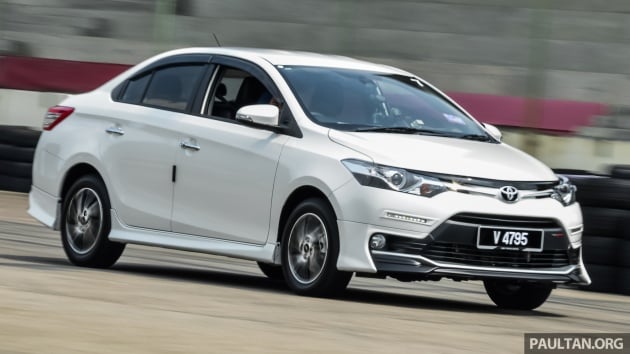









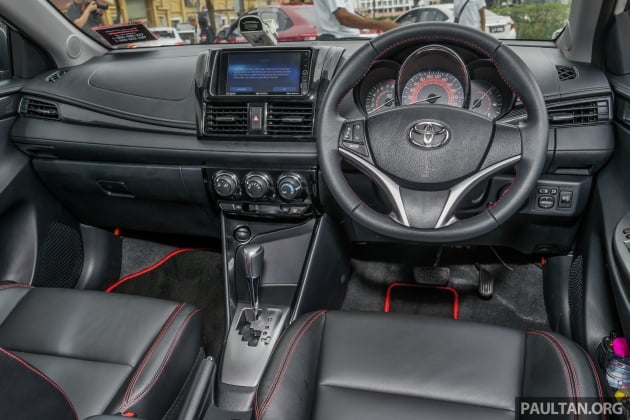







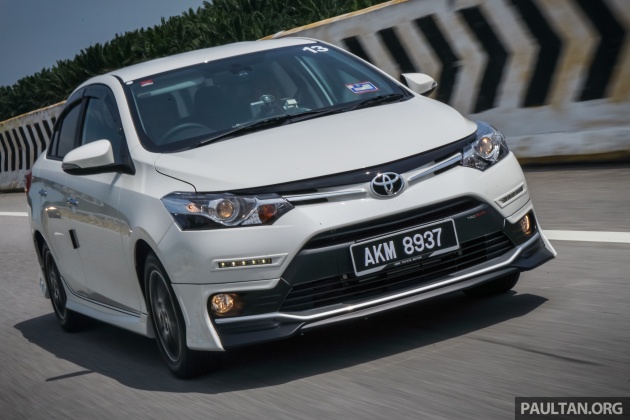
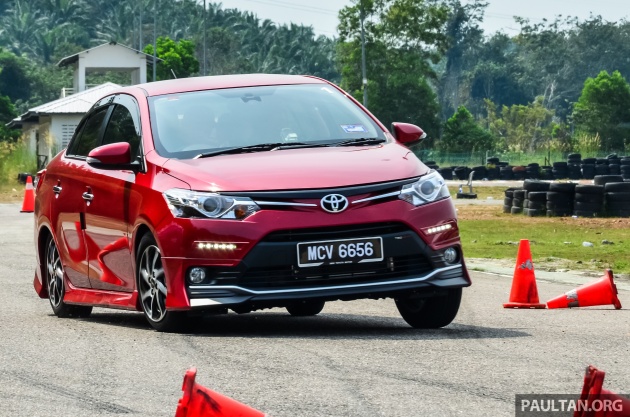
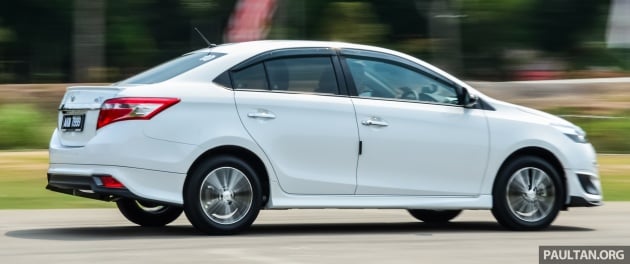
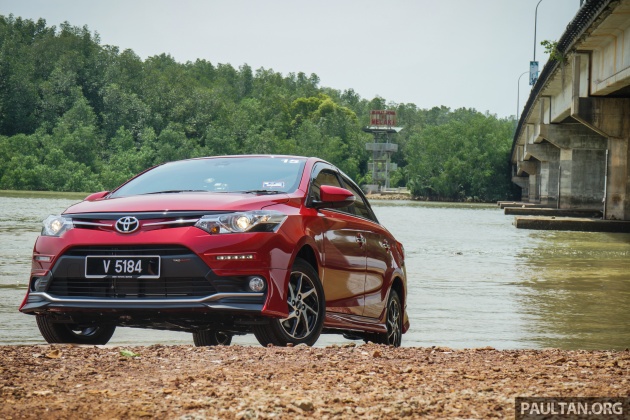









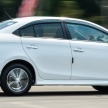






























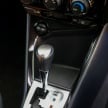













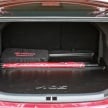








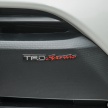











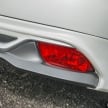



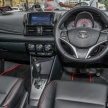








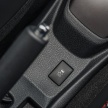

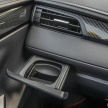




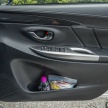




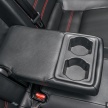





































AI-generated Summary ✨
Comments on the blog post about the 2016 Toyota Vios reveal mixed sentiments. Many praise its improvements like Dual VVT-i, CVT, VSC, and safety features, mentioning its reliable, comfortable ride and fuel efficiency benefits. However, there are criticisms of its high price, limited safety features (only 2 airbags on base models), and the lack of ASEAN NCAP crash test ratings. Some commenters feel the facelift was overdue and compare it unfavorably with competitors like Honda City and Proton, noting that the Vios is overpriced locally despite government incentives. Off-topic discussions about car prices, government policies, and off-road capabilities emerge, but overall, the focus remains on the Vios’s engineering, safety, value, and how it stacks up against rivals.